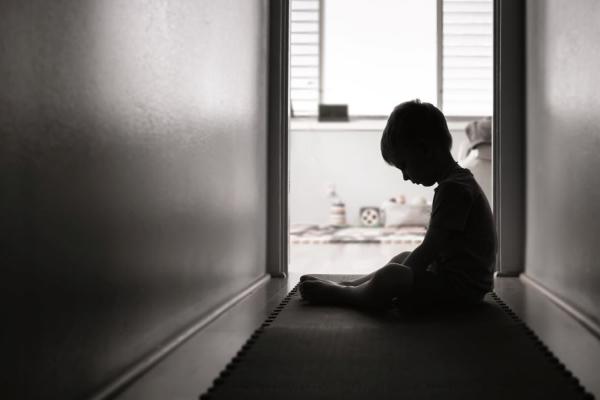Child sexual abuse is a growing problem, both online and offline. In 2023 alone, there were 1.3 million reports of child sexual abuse in the EU, which included more than 3.4 million images and videos. Reports of child sexual abuse have also significantly grown on a global scale, with 1 million reports in 2010 to almost 35.9 million in 2023, including nearly 105.6 million images and videos.
According to the Internet Watch Foundation, the EU stills ranks highest in the world for hosting images and videos of child sexual abuse, with three in every five child sexual abuse reports (59%) hosted in an EU Member State. The proactive detection by companies of online child sexual abuse has been instrumental in rescuing children from ongoing abuse. In many cases, the companies are the only ones that can detect and report the abuse, either because the child is too scared or young to report or the parents and carers are unaware of the abuse or are themselves the abusers.
Behind each image and video, there is a real child being abused
Child sexual abuse has life-long consequences for victims. Every time perpetrators share images and videos online, the violation of their privacy continues, often lasting for years. Victims have to live with the knowledge that the content showing the worst moments of their lives is being circulated and anyone, including friends and relatives, may see it.

The evolution of the digital world has made this crime a global one, contributing to the creation of a global market for child sexual abuse material which is shared online across borders.
The Internet provides anonymity and an environment in which abusers can interact, exchange materials and manuals how to groom and abuse minors as well as build their own community.
Child sexual abuse offenders have become increasingly sophisticated in their use of technology. For instance, by using social media with end-to-end encryption, the abusers share and trade images and videos with impunity. There are often closed groups on social media that require an ‘entrance fee’ in exchange for (new, unseen) child sexual abuse material.
Viewing child sexual abuse material (CSAM) is therefore not just a passive crime; it actively fuels the demand for more content to be produced. Each time material is consumed, it encourages perpetrators to exploit children, further promoting the cycle of abuse and victimisation. Research also shows that almost half of those that view CSAM seek contact with children to abuse them.
Technological development has also fuelled demand for child sexual abuse material by enabling the monetization of abuse. Abusers can with one click, pay to watch live streaming of child sexual abuse and access dedicated platforms on the dark web. Technology has contributed to the increase of digital crimes such as sextortion, combining "sex" and "extortion," whereby criminals threaten to expose explicit images or videos of victims, often children, unless paid.
Latest actions to protect children against sexual abuse
2020-2025 EU Strategy for a more effective fight against child sexual abuse
The EU’s Strategy for a more effective fight against child sexual abuse is the reference framework for EU actions during the 2020 – 2025 period. It includes 8 initiatives to put in place a strong legal framework for the protection of children and facilitate a coordinated approach across the many actors involved in protecting and supporting children.
The Strategy also focuses on identifying gaps in legislation as well as best practises and priority actions. It sets out the initiatives to boost coordination, including a prevention network for practitioners and researchers, creating an EU Centre on Child Sexual Abuse (EU Centre), cooperating with industry through the EU Internet Forum and supporting the WePROTECT Global Alliance to End Child Sexual Exploitation Online.
Policy timeline
- 2024, 6 FebruaryProposal for a recast of the Directive 2011/93/EU
- 2023, 30 NovemberProposal for an extension of the Interim Regulation
Proposal for an extension of the Interim Regulation (Regulation amending Regulation (EU) 2021/1232 of the European Parliament and of the Council on a temporary derogation from certain provisions of Directive 2002/58/EC for the purpose of combating online child sexual abuse)
- 2022, 11 MayProposal for a Regulation on preventing and combatting the sexual abuse and sexual exploitation of children
- 2021, 24 MarchEU Strategy on the Rights of the Child
- 2021, 6 JulyAdoption of the ePrivacy derogation/short term legislation
- 2020, 24 JulyEU Strategy for a more effective fight Against Child Sexual Abuse
- 2020, 24 JulyEU Security Union Strategy
- 2019, 26 NovemberEuropean Parliament resolution on children’s rights on the occasion of the 30th anniversary of the UN Convention on the Rights of the Child
- 2019, 8 OctoberCouncil Conclusions on combating the sexual abuse of children
- 2016, 16 DecemberReport assessing the implementation of the measures referred to in Article 25 of Directive 2011/93/EU
Report assessing the implementation of the measures referred to in Article 25 of Directive 2011/93/EU on combating sexual abuse and sexual exploitation of children and child pornography
- 2016, 16 DecemberReport assessing the extent to which the MS have taken necessary measures in order to comply with Directive 2011/93/EU
Report assessing the extent to which the MS have taken necessary measures in order to comply with Directive 2011/93/EU on combating sexual abuse and sexual exploitation of children and child pornography
- 2011, 13 DecemberDirective on combating the sexual abuse and sexual exploitation of children and child pornography
Directive on combating the sexual abuse and sexual exploitation of children and child pornography
Recent cases and news of child sexual abuse in the EU
The EU fights against child sexual abuse in multiple ways, including through coordinated international police actions in which Europol’s European Cybercrime Centre is a key player. Some recent examples of Europol’s successes include:
- 57 men arrested for possessing and sharing over 100 000 depictions of child sexual abuse
- 39 suspects identified in major online child sexual abuse swoop in the Western Balkan region
- Europol Victim Identification Taskforce leads to rescue of three sexually abused children
- 49 arrests in Poland in an operation targeting child sexual exploitation online
- 146 children worldwide saved in an operation targeting child abuse online
Further information concerning recent cases of child sexual abuse that started with a report from an online service provider is available here.
Documents
Policy framework
EU Strategy for a more effective fight against child sexual abuse
Legislative proposal for a regulation to prevent and combat child sexual abuse
Proposal for a Regulation on preventing and combatting the sexual abuse and sexual exploitation of children
Analysis of related legislation
Regulatory Scrutiny Board: Positive opinion
Commission services replies to comments from the Regulatory Scrutiny Board, further explaining the proposal
Follow-up questions to the Commission after the presentation of the proposal
Comments of the services of the Commission with regards to the time-frame between the expiration of the Interim Regulation and the adoption of the proposed Regulation laying down rules to prevent and combat child sexual abuse
Comments of the services of the Commission on some elements of the Joint Opinion of the European Data Protection Supervisor and the European Data Protection Board (EDPS-EDPB)
Comments of the services of the Commission on some elements of the Draft Final Complementary Impact Assessment on the Proposal
Proposal for the extension of the Interim Regulation
Recast of the Directive to strengthen criminal law on child sexual abuse
European Parliament documents
European Parliament resolution: Children rights in occasion of the 30th anniversary of the Convention on the Rights of the Child
Council of the EU documents
Council conclusions on combating the sexual abuse of children
More about the fight against child sexual abuse

The EU Strategy for a more effective fight against child sexual abuse aims to respond to the increasing threat of child sexual abuse, both in its online and offline forms.

The Commission will propose new legislation where needed, particularly to clarify the role that online service providers can play to protect children.

The EU strategy for a more effective fight against child sexual abuse underlines the importance of cooperation with various stakeholders in the fight against child sexual abuse.

The Commission funds a number of projects through regular calls for proposals under both the Internal Security Fund and Horizon Europe framework programme for research and innovation.




